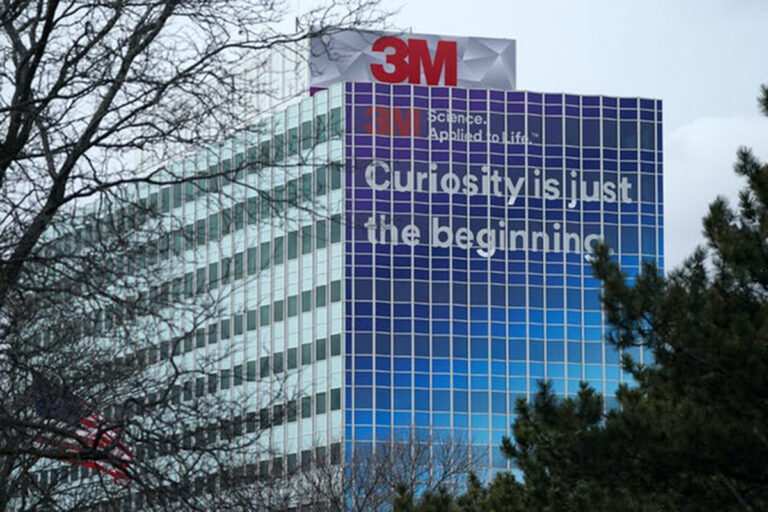
It’s hard to keep track of all the lawsuits 3M is dealing with and to judge whether the company can afford to pay the billions of dollars that litigants want.
It’s even harder to know whether 3M can again be the engine of innovation that for decades made it Minnesota’s most valuable company.
Companies hit with mass tort cases usually defend one harmful product, like Georgia-Pacific with asbestos or Bayer with glyphosates. But 3M confronts two lines of litigation: over harmful PFAS chemicals in products and the effectiveness of military-grade earplugs.
In both, plaintiff attorneys want to extract the most they can from 3M without hurting the company so much that it can’t pay their clients.
Meanwhile, 3M is doing a balancing act of its own. While paying big financial penalties, it’s trying to hang on to both investors and the innovative scientists who made it large and profitable.
As my colleague Brooks Johnson wrote last Sunday, that’s “one of the most significant set of challenges in the company’s 121-year history.”
But PFAS, earplugs and the subsequent litigation weren’t enough to bring 3M to this difficult moment. It’s also paying a price for a decision made in 2001 to change its operating structure. That’s when 3M boosted profit margins in part by reducing its research and development spending.
Averaging close to 7% of sales through the 1990s, 3M’s spending on R&D since then has rarely gone over 6%. Last year, it was 5.4%.
As it lost some of its innovative edge, 3M’s pricing power eroded. Its profit margin began to slip in 2017, though it got a bounce during the pandemic when demand surged for its N95 face coverings.
Lately, a bigger percentage of its earnings has gone to the dividend, which the company has improved for more than 60 years. It’s an amazing track record, but it may be impossible to continue.
It appears unlikely 3M will be able to maintain the balance between its investors who love the dividend and its scientists who keep innovating.
In a meeting with investment analysts on May 31, 3M CEO Mike Roman said its first priority for allocating its money is on R&D and capital spending in its business lines.
“We know that’s the way to create the greatest value for us long term for our customers, for our shareholders,” Roman said. He described an R&D spending target in a range of 5.5% to 6% of sales.
“The second priority, and it’s been a high priority for us, is the dividend,” he added.
Of the challenges, the PFAS cases by far put the biggest squeeze on 3M. But the worst financial danger appears to have been averted with the settlement that will cost 3M $10 billion to $12.5 billion over the next decade.
“It puts an end to a lot of the near-term litigation catalysts with respect to PFAS,” said Jory Eisenberg, senior research analyst at CreditSights, a New York firm that has provided comprehensive reporting on 3M’s litigation to investors.
“It definitely doesn’t end the story, but it does put to bed the overhanging threat that was on their doorstep,” Eisenberg said.
CreditSights earlier this year put together an analysis that, as a worst-case scenario, plotted 3M’s potential PFAS liability at around $140 billion.
With the settlement announced last month, which chiefly covered the presence of PFAS chemicals in drinking water, 3M’s ultimate liability will be far, far less, Eisenberg said. He didn’t have a precise estimate, though.
The company still faces litigation with state attorneys general, several European countries and attorneys representing people who claim personal injury from PFAS in products.
Before last month’s big settlement, 3M had also reached settlements in PFAS cleanup cases brought in Minnesota, Alabama, Michigan and Belgium. Collectively, those cost 3M about $1.9 billion.
For context, 3M’s annual revenue has been around $32 billion to $35 billion over the last few years, and its net income has been around $4.5 billion to $6 billion. The company plans to spin off its health care business, likely early next year, a move that will leave the ongoing 3M with about $27 billion in annual revenue.
The lawsuits over earplugs, a problem that came after 3M bought a company in 2008, represent a smaller financial liability. But it could also reach the billions.
“Layered on top of PFAS, it does start to have a potential impact on 3M’s free cash flow profile and the potential to cut into its dividend-paying ability,” Eisenberg said.
Last week, one of the bellwether cases in the earplug litigation — this time involving civilian plaintiffs — was set to go on trial in a Minneapolis courtroom. At the last minute, lawyers agreed to delay it until next month.
That may be a sign that 3M and plaintiffs’ attorneys are working on another sweeping settlement.
___
© 2023 StarTribune
Distributed by Tribune Content Agency, LLC.
0 comments :
Post a Comment